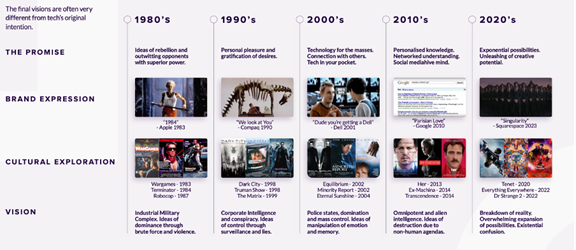Building a working knowledge of culture and why it matters for tech brands
Tech brands today face an enormous problem – the more powerful and sophisticated technology becomes; the less people trust it. In fact, many even fear its power and sophistication.
This is a cultural problem.
Tech companies know that technology offers huge potential to make meaningful, lasting and positive change on a grand scale. Yet, in culture – i.e., within the body of shared ideas, emotions and activities that make up the lives of people within our communities – this change is largely seen as negative and dystopian.
In fact, in culture, technology is often seen as something to be feared – perhaps even resisted.
This is bad news for tech brands.
According to Edelman’s 2022 “Trust in Technology” report, trust in the technology sector has dropped in 14 out of 22 markets around the world over the past decade.
(Image source: edelman.com)
Crucially, the report finds that where trust is low, so too is adoption – and the UK has amongst the lowest levels of both trust and adoption anywhere for emerging technologies. This includes cryptocurrency (27%), blockchain (28%), Web3 (33%), augmented and virtual reality products (36%), and AI (38%).
(Image source: edelman.com)
In a world of rapid digital transformation, tech companies live and die by adoption rates. And since adoption is tied intrinsically to trust – and trust itself emerges from how cultural narratives interpret and assess technology – tech brands need a working knowledge of culture if they are to communicate the positive change technology promises to bring in a way that resonates culturally.
In other words, tech brands must look deeply at technology through the lens of culture if they are to communicate its benefits effectively and instil the trust that is needed to drive adoption.
This is critical. Only by getting the visual and written language of tech to resonate culturally can technology companies begin to bridge the widening gap between tech and people.
Making Technology Meaningful, Human, and Resonant
Throughout history, technology and culture have evolved side-by-side in constant dialogue – and often tension. One always influences the other, be it the Luddites attacking mills in the early 19th century, or Sarah Silverman suing OpenAI and Meta over copyright infringement in the 21st.
In fact, discussions of, and cultural responses to, technology can be traced back to the Ancient Greeks, but it’s since the 20th century – when new technologies became a part of everyday life – that tech has become part of the popular imagination.
Since this time, the tech narrative has shifted dramatically. Driven in large part by Silicon Valley, which emerged as a cultural powerhouse in the 1960s, the tech narrative is today synonymous with radical change and disruption.
This change is often positioned as a ‘promise’ to society and culture by technology companies through their advertising and communications. In response, these promises are explored by the global imagination through film, TV, books, the news and social media. Ultimately, these explorations lead to a ‘vision’ that is created in the hearts and minds of society and expressed in culture.
The trouble for technology companies is that these final cultural visions are often very different from the initial promise.
The state of the culture seems clear – despite the promises of tech brands, the more technology progresses, the more people fear it.
As such, the technology sector faces an urgent need to find a way to make technology meaningful, human and resonant.
Tech and Culture: The Promise and The Vision of Self-Augmentation
Let’s now take a look at one of technology’s most prominent promises made by many a tech giant – the promise of self-augmentation – and see how it shows up across brands and culture, and how this impacts the ultimate vision that’s left within culture.
The Promise of Self-Augmentation
Be it through AI, robotics, cloud computing software, operating systems for smartphones, a new release from the video game industry, or a new piece of consumer electronics – the technology field promises to augment people’s capabilities, endowing them with more power physically, cognitively, and emotionally.
The promise is that technology will transcend perceived human limits like fatigue, emotional liability, and propensity for error in favour of wholly optimised and rational operations.
The promise, in short, for some of the world's most popular products and solutions is for super-human powers.
Brand Expression – “Human But Better”
Tech companies often express these benefits of their products in terms of a promise that manifests as “Human But Better”. This promise is made no matter if the company is targeting businesses, employees, or consumers.
The “human” part is emphasised through the anthropomorphic qualities of the product – it looks human, or responds in a human-like way.
However, what is also emphasised is that the product is clearly superior to the human alternative, cognitively, physically and emotionally.
Cultural Expression – “Sci-Fi Supremacy”
How does culture explore the promise of self-augmentation?
Often, it sets up a dichotomy between cold, rational and powerful robotic efficiency and human weakness and fallibility. In hugely successful sci-fi blockbusters like I, Robot, and Ex Machina, technology is represented as conscious, superior, and autonomous – acting for the benefit of itself at the expense of humanity.
The Vision – Fear
The resulting vision that is formed from the cultural expression of the promises made by tech companies is one of fear.
Because the cultural interpretation of emerging technologies like AI and robotics is often light years away from what is achievable with those technologies, there is confusion in the public consciousness as to what “autonomy” really means in terms of AI and machines.
Films and TV programs attribute to machines something comparable to human autonomy and willpower – and represent those machines with powers that are far superior to humans.
The resulting vision is not one of human augmentation, but annihilation – hence, the cultural fear of emerging technology.
How Can Tech Brands Change the Cultural Narrative?
It’s not so much that companies in the technology sector are breaking their promises. It’s that those promises are getting distorted once they’ve been washed through the cultural machine.
The question is, then, how can brands in the technology industry get their promises to land in the way they want them to?
That’s where Across the Pond comes in.
Across the Pond is a global independent creative agency on a mission to help brands in the technology sector create a better world. Each month, we analyse the emergent conversations taking place within the cultural zeitgeist. At present, we see a growing existential panic, and an ever-widening chasm between people and technology.
In our special report “How Tech Shows Up in Culture (And How It Can Do Better)”, we explore the depths of this chasm to reveal how technology is showing up in culture today, and how people understand and relate to technology as a result of that representation.
Crucially, we explore the emerging visual codes that uncover new ways to build more culturally relevant and resonant narratives around technology.
These include:
· Shifting binary codes
· Morphogenetic poetry
· Anthropomorphic warmth
· Human-centred functionalism
· Kitsch subversion
· Technomorphic creativity
To learn more and rethink the role culture plays in positioning emerging tech, download the report today, or get in touch directly for more information and insights.








